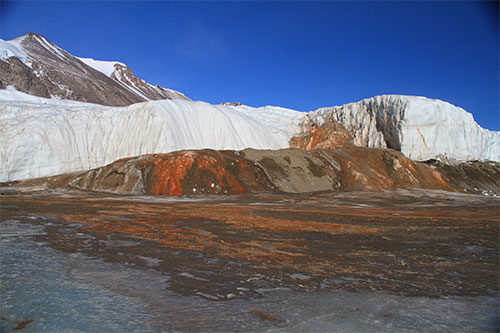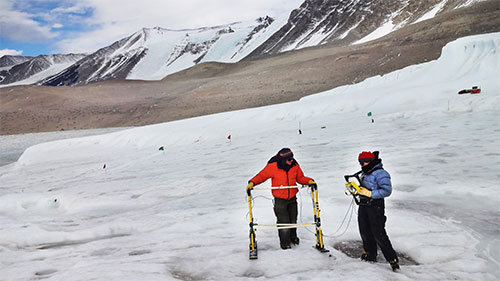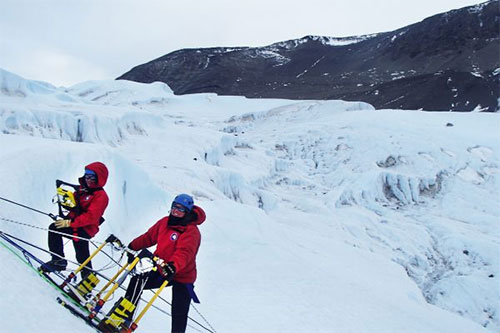
Researchers solve the century-old mystery of Blood FallsBy MEGHAN MURPHY
April 25, 2017
The team’s study, published in the Journal of Glaciology, describes the brine’s 300-foot path from beneath Taylor Glacier to the waterfall. This path has been a mystery since geoscientist Griffith Taylor discovered Blood Falls in 1911.
Blood Falls is a famous iron-rich outflow of water that scientists suspected was connected to a water source that may have been trapped under an Antarctic glacier for more than a million years.
“The salts in the brine made this discovery possible by amplifying contrast with the fresh glacier ice,” Badgeley said. Blood Falls is famous for its sporadic releases of iron-rich salty water. The brine turns red when the iron contacts air.
University of Alaska Fairbanks glaciologist Erin Pettit, left, and graduate student Christina Carr collect radar data on Taylor Glacier.
“We moved the antennae around the glacier in grid-like patterns so that we could ‘see’ what was underneath us inside the ice, kind of like a bat uses echolocation to ‘see’ things around it,” said co-author Christina Carr, a doctoral student at UAF. Pettit said the researchers made another significant discovery – that liquid water can persist inside an extremely cold glacier. Scientists previously thought this was nearly impossible, but Pettit said the freezing process explains how water can flow in a cold glacier.
Christina Carr, left, and Jessica Badgeley collect radar data to map the pathway of salty water that connects Blood Falls to the source of water underneath the glacier.
Pettit said she enlisted Badgeley as an undergraduate student to help with the overall mission of understanding the hydrological plumbing of cold-based glaciers. “Jessica’s work is a perfect example of the high level of work undergraduate students can do when you give them a challenge and set the expectations high,” she said. The National Science Foundation sponsored the research.
On the Web:
Representations of fact and opinions in comments posted are solely those of the individual posters and do not represent the opinions of Sitnews.
|
||


